HOW IT'S MADE: EXTRA VIRGIN OLIVE OIL
Posted by Robert Curbishley on 2023-06-28

About Robert curbishley, olive oil sommelier
I have always been interested in food. Back in 2005 I changed careers from acting and started working at Borough Market in London Bridge, for a bakery. This led to taking over the running of The Fresh Olive Company stall(now Belazu) in 2008 and I managed it until 2016 when we left Borough Market.
I love stories of provenance and producers who swim against the tide, maintaining traditional and artisanal practices simply because they believe they produce better products. In 2020 just before the first lockdown, I completed a course and became a certificated olive oil sommelier. I hope to give you a little more knowledge about olive oil and show you some of my favourite Belazu varieties.
Robert is a familiar face around Belazu HQ, who's been with us since 2005. Some of you might remember him from our Borough Market days, or his more recent masterclasses. He became an olive oil sommelier in 2020, which simply means he's trained to identify different types of olive oil and their flavour profiles.
This month, he's taken the reigns on our blog, sharing his knowledge about Extra Virgin Olive Oil.
HOW IT'S MADE
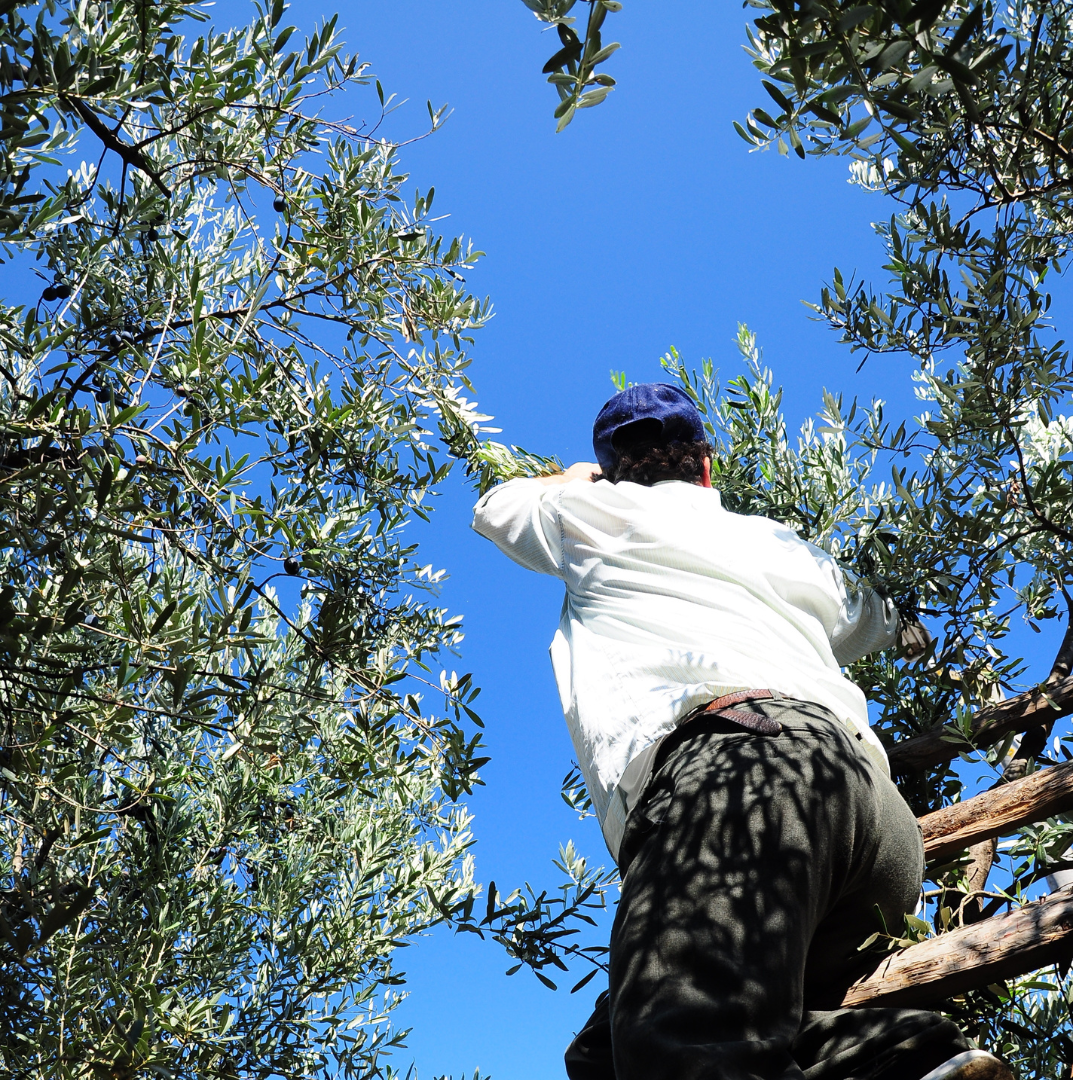
1. picking
The olives are picked quickly and carefully, taking care not to damage them. They are immediately crushed or stored for less than 24 hours.

2. Crushing
Crushing can be done by stone wheels or steel grinders, or hammer mills. The olives should be reduced to a paste as quickly and effectively as possible to prevent exposure to oxygen or lipolysis from taking place. This is when the fats in the oil are degraded by an enzyme, affecting the overall quality of the oil.
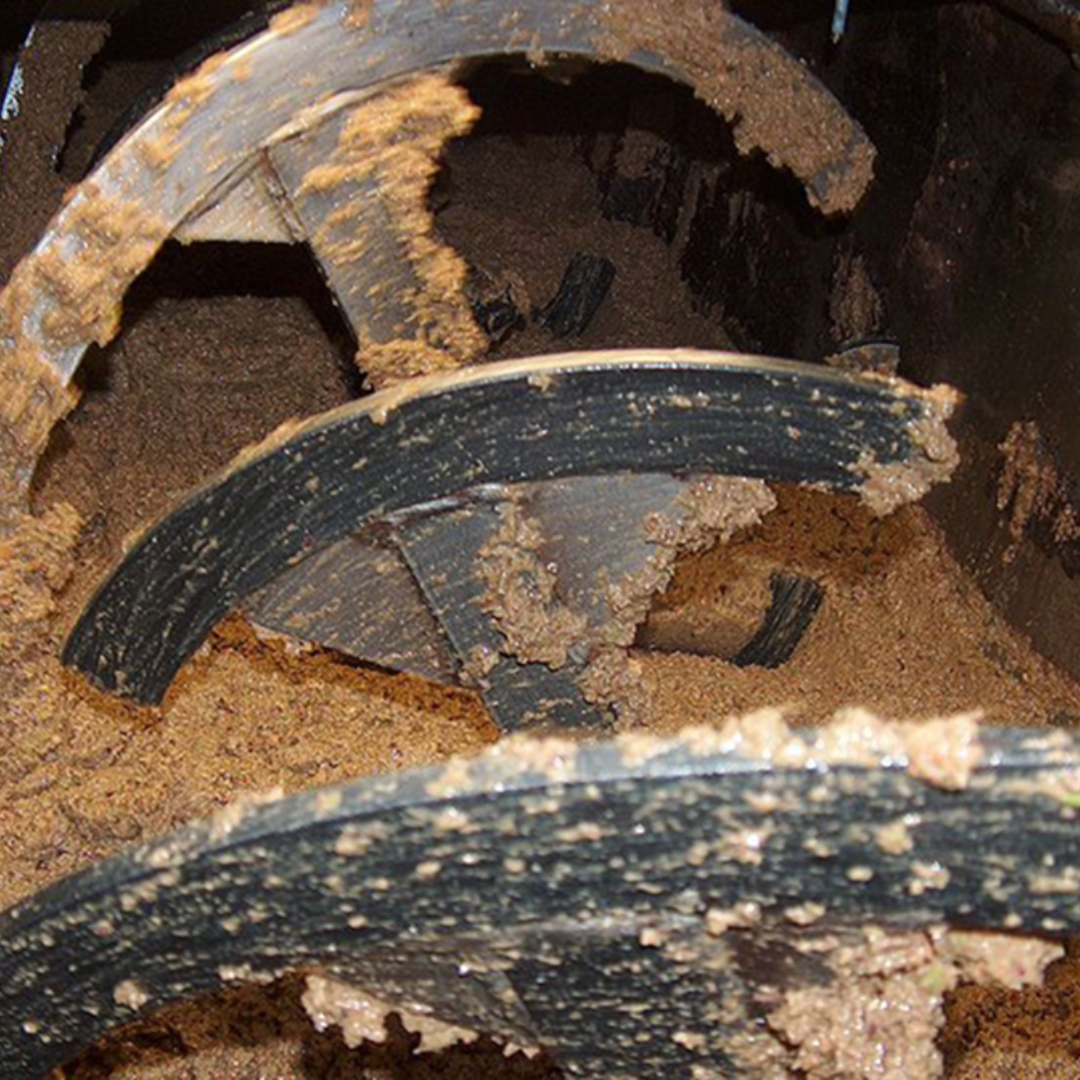
3. Malaxing
Malaxing is just stirring or moving the paste to encourage the small fat cells to break and form larger, heavier oil drops. It should be ideally limited to 20 mins to preserve the quality of the oil.

4. Extraction
Ninety-five percent of oils are extracted by spinning in a two-stage centrifuge. The first centrifuge separates liquids from solids. The second, faster centrifuge separates the denser water from the less dense oil. The picture above shows the old method of extraction, where the olive paste is spread onto straw disks that are then stacked to a certain height, forming a pile. The liquid is released and then collected.
PRODUCER FOCUS: EDUARD PONS
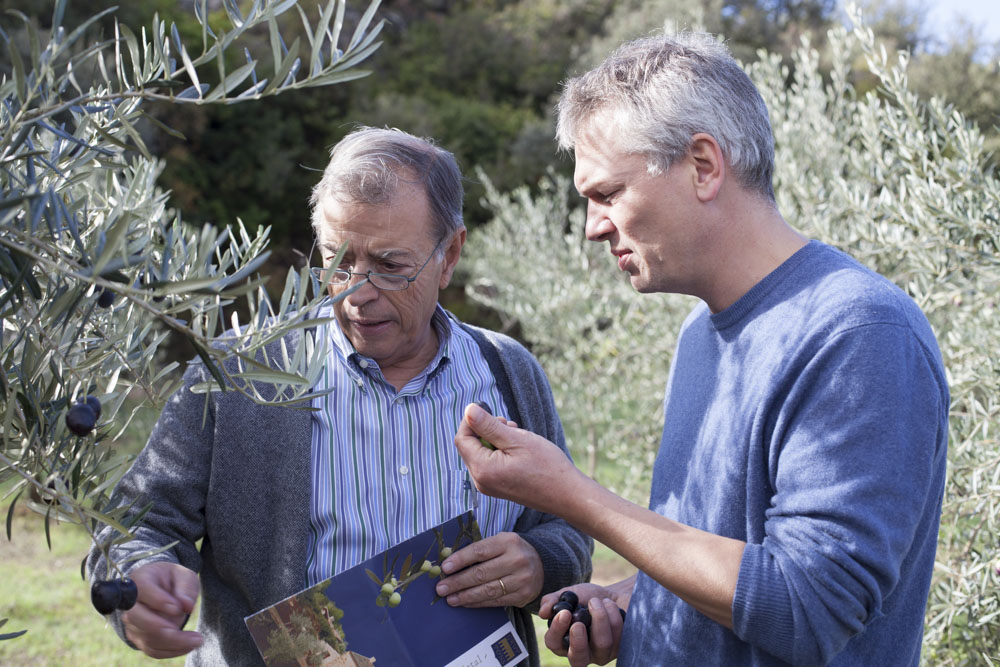
Eduard with one of our founders George, inspecting the olive groves.
We've been working closely with Eduard and his family for nearly 30 years. A fourth generation producer, Eduard has been dedicated to producing the best single-varietal olive oils on his family farm in Lleida, Catalunya. He and his team put huge amounts of effort into regenerating the soil by promoting biodiversity, reducing erosion, and increasing organic matter in the land, which ensures the oils you buy from us is rich in both flavour and complexity.
TASTING NOTES FROM OUR SOMMELIER.
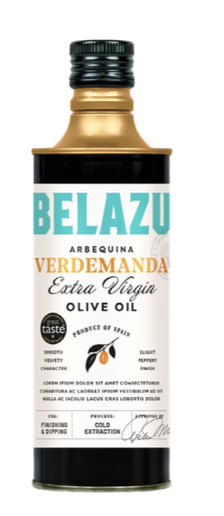
Once the olives are ground, the oil is flash frozen, which results in the freshest flavour possible. Grassy and tomato leaf on the nose, which once tasted, yields to under-ripe banana and a gentle peppery pungency. This makes it perfect for finishing and arguably more unusual things like making ice cream or using on desserts.

Made with Cornicabra olives grown in the sun-drenched hills of Andalucia. This oil has a distinct fruitiness on the nose and in flavour. with a gentle bitterness and a pleasing pungency at the back of the throat, with an excellent length of flavour. Great for a tomato salad, or for dipping crusty fresh bread, with a smattering of our 1.34 Balsamic Vinegar of Modena.
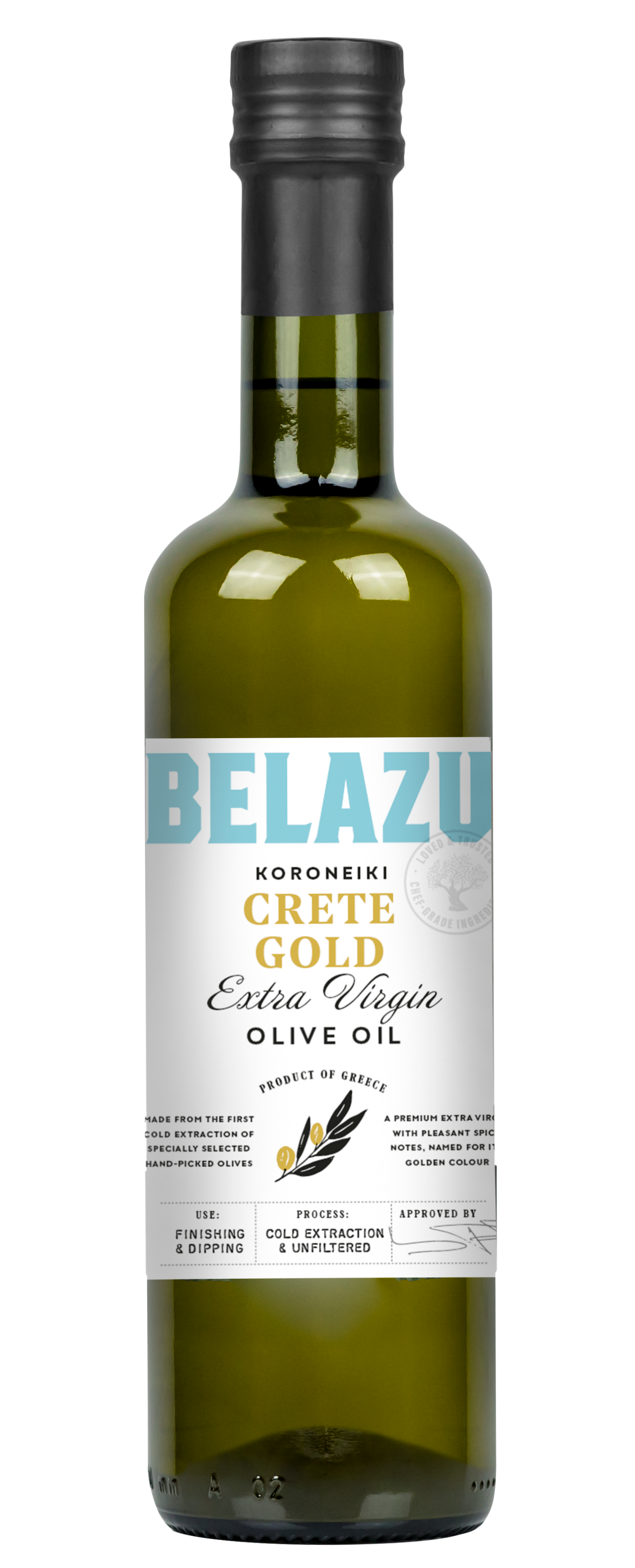
This oil has a lighter mouth feel with a peppery flavour and grassy on the nose. Due to its pungency, this variety is ideal for a Radicchio salad or even drizzled over chocolate mousse.
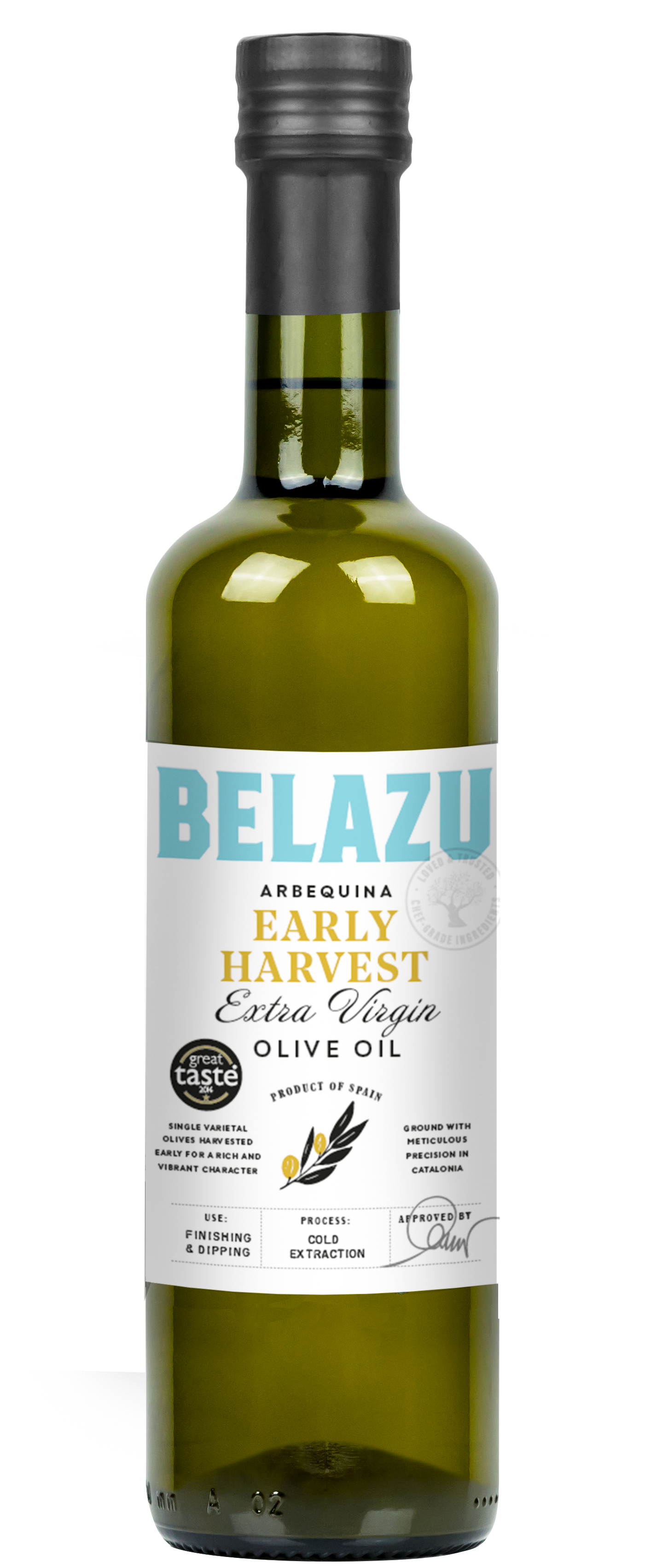
A higher degree of creaminess than our other varieties, Early Harvest has tomato leaf on the nose, with a gentle pungency on the back of the throat, with a good length of flavour. These qualities make this oil a perfect all-rounder, from finishing dishes to using to make mayonnaise and hollandaise sauces.






